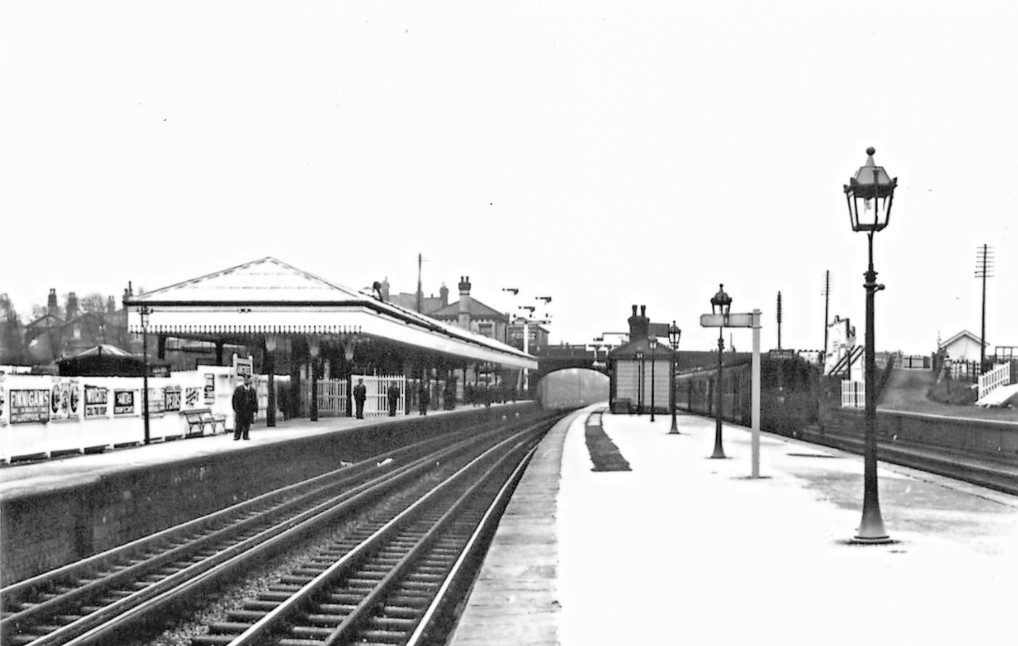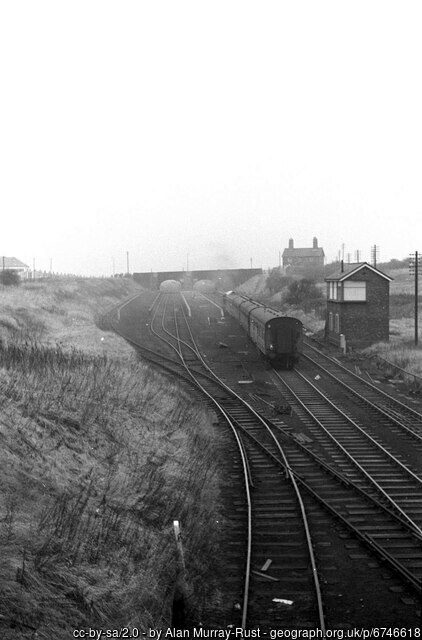Aintree Central was one of Liverpool’s lesser-known but historically interesting railway stations. Opened by the Cheshire Lines Committee (CLC) in 1880, it was primarily intended to serve the nearby Aintree Racecourse, famous for hosting the Grand National, as well as providing an additional suburban connection north of the city. Unlike more grandiose stations like Liverpool Central or Lime Street, Aintree Central was more functional in nature, but it played a key role in managing the enormous crowds drawn to the racecourse every year.
The station was located near Warbreck Moor, distinct from the older Aintree Station on the Lancashire and Yorkshire Railway’s (LYR) line to Ormskirk. The decision to build Aintree Central was partly competitive; the CLC wanted to capture a share of the lucrative race-day traffic. As such, the station was constructed with a large island platform and a substantial station building, featuring the usual CLC red brick with stone detailing, though less ornate than their city centre offerings.

Aintree Central Station thought to have been taken around 1912
Aintree Central was served by a branch line running from Halewood through Gateacre and Walton-on-the-Hill before reaching Aintree. Services primarily connected into Liverpool Central High Level, though there were through services to Manchester Central on some race days and at various points in its early history.
For most of the year, Aintree Central was a quiet station. Regular suburban services ran, but passenger numbers were modest compared to other stations closer to Liverpool. However, during the Grand National meeting and other race events, the station came alive. Special race-day trains were laid on, many of them non-stop from Liverpool Central or Manchester Central, and additional temporary platforms were even erected to handle the influx of passengers. Crowds of thousands would pour off the trains, many in their finest clothes, and make the short walk to the racecourse entrance.
Engineering-wise, the station was relatively simple but effective. The island platform was served by two tracks with several sidings nearby to stable race-day special trains. Facilities included waiting rooms, ticket offices, and refreshment areas, all scaled to accommodate the huge swings between normal and peak usage. The signalling was controlled by a signal box located near the station throat, managing the race-day movements with considerable complexity.
One particular technical point of interest is that, during peak periods, an ingenious system of temporary crossovers and extra sidings was employed to rapidly move empty trains out of the station to be held until the return rush. Staff at Aintree Central had to coordinate very closely with controllers further down the line to ensure smooth operations — a challenging task in an era before modern centralised traffic control.
The station’s decline began after the Second World War. Passenger numbers dwindled due to increased car ownership, changing work patterns, and the broader decline in railway travel throughout Britain. Although the Grand National continued to draw huge crowds, these were increasingly arriving by road. Race-day specials remained popular into the 1950s, but they could not sustain the station on their own.
Regular passenger services to Aintree Central were withdrawn in 1958, and the station closed to general traffic at that point. However, it was kept on a sort of “event-only” basis for race meetings, with race-day specials continuing until 1960. The final use of the station for Grand National traffic was in that year, after which it was closed completely to passenger services.

The track remained in situ for a few years afterwards, used occasionally for goods and parcels traffic. However, by the mid-1960s the line was effectively abandoned. The tracks through Aintree Central were lifted not long after, and the station buildings were demolished in the early 1970s.
Today, almost nothing of Aintree Central survives. The site is occupied by retail developments, including a large DIY store and associated car parks. Keen-eyed explorers can, however, still find subtle clues: fragments of old railway walling, slight embankment remains, and, in some places, the alignments of old access roads that once served the station.
An interesting historical tidbit: during the station’s busiest years, Aintree Central often handled special trains from as far afield as Birmingham and London on Grand National day, with certain trains travelling non-stop from Manchester Central. This made the station briefly one of the busiest in the country on race days, a remarkable statistic for a station that otherwise saw only a trickle of local passengers.
Another piece of trivia worth noting: the line serving Aintree Central was one of the earliest to adopt block signalling in suburban Liverpool, introduced in the late 19th century to safely manage the dense train movements during race meetings. Block instruments used on the line were examples of early mechanical signalling technology, showcasing how operational demands often drove technical innovation on even modest suburban lines.
The story of Aintree Central is a reminder of the way that railways adapted to Britain’s social calendar, building infrastructure to cope with events that drew mass crowds long before the invention of motorways and mass car transport. Although it was never a major terminus or a bustling suburban hub year-round, Aintree Central played its part in Liverpool’s railway history — quietly most of the time, but roaring to life whenever the thundering hooves of the Grand National came around.
